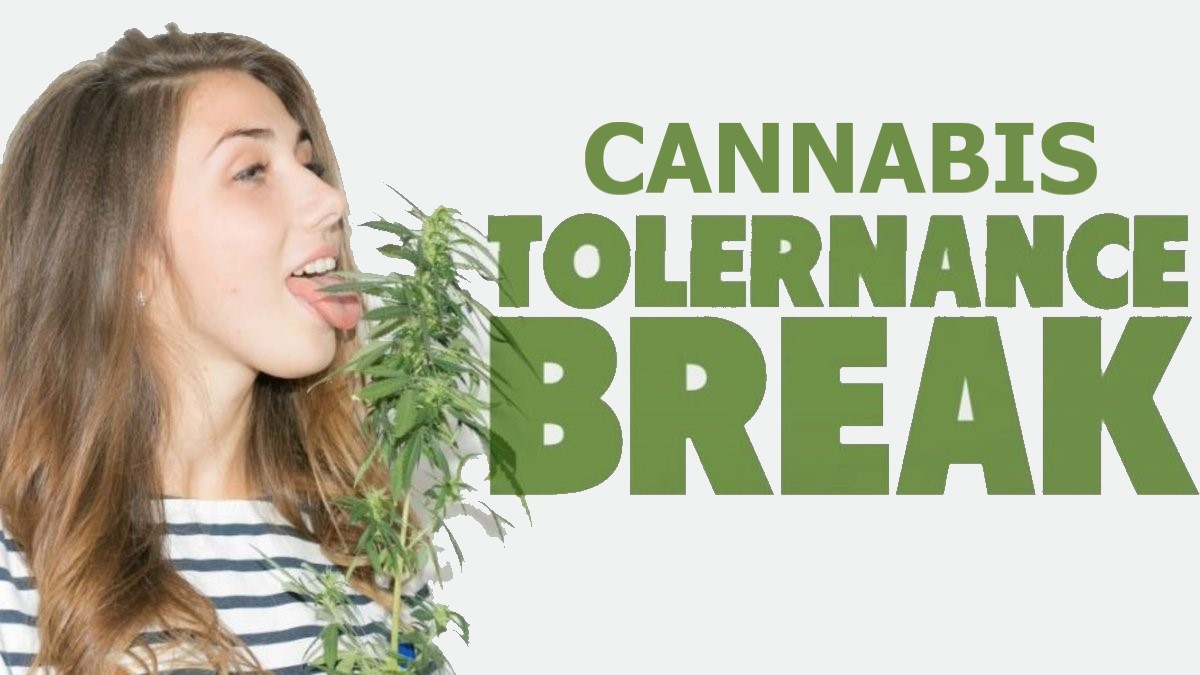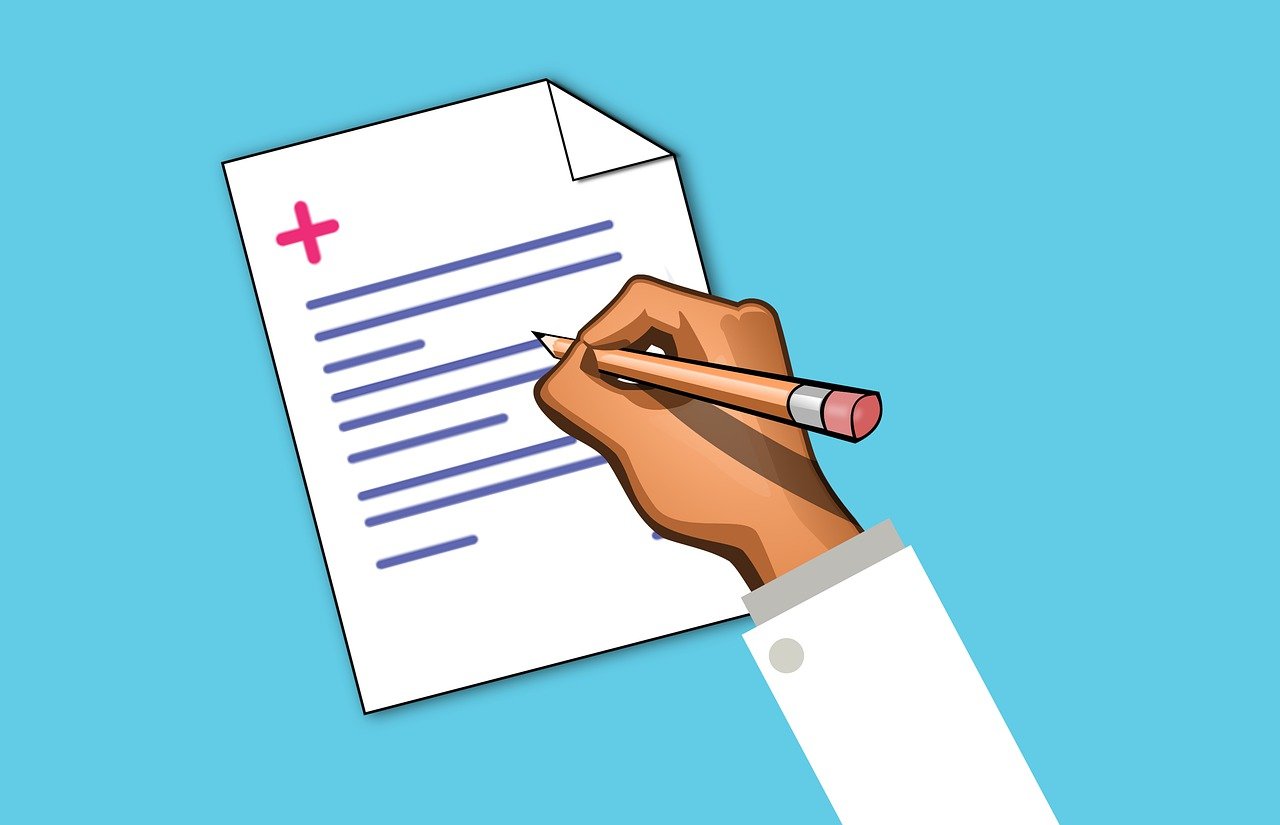Cannabis 101
Cannabis Tolerance Break: Getting the Most out of Your Experience
Published
1 year agoon
By
admin
A cannabis tolerance break is when you stop taking cannabis for some time to allow your body to reset its tolerance to the chemical. This might be good if you don’t feel like you’re receiving the same effects from cannabis as you used to or if you want to give your body a break from any potential harmful effects. This is when you temporarily cease using cannabis to give your body a chance to heal. By taking a break, you may prevent becoming tolerant to using marijuana products and losing its effectiveness over time. You might be able to get cannabis goods for less money as a result.
CBD can gather in your body over time; therefore, you may need to discontinue its use to reset your tolerance. Taking a tolerance break may also help you save money on buying products. When you’re using increasing amounts of a product to achieve the same outcomes, it’s time to take a break and try if you can do without it for a bit. Of course, since every person is unique, you might not even require a cannabis tolerance break. But if you see your tolerance rising, you might want to think twice.
Regular users may have seen that the benefits of cannabis start to fade over time. A cannabis tolerance break might help reset your body’s sensitivity to the chemical. During a tolerance break, you refrain from consuming products for a certain period, usually one to two weeks. This provides an opportunity for your body to “reset,” which may make the benefits more potent when you resume using it.
There are several methods for taking a tolerance break. Either stop taking cannabis or gradually cut back over a week or two. If you choose to stop taking it, you could have some withdrawal symptoms, such as agitation, sleeplessness, or headaches. Most of the time, these symptoms are minor and will go away in a few days. You may avoid side effects completely by minimizing your dosage. Initiate a 25% dose reduction every several days. You can stop using it after reducing your intake to just a trace quantity.
When you stop using cannabis to build tolerance, you may notice a transient rise in anxiety or paranoia. Your body is attempting to adjust due to being accustomed to another substance. Within a few days, these emotions ought to go away. Additionally, you could feel less hungry and have problems sleeping.
Again, these are only short adverse effects that will disappear as your body becomes used to them. Your body will have reset its tolerance levels as a result. Finally, you could discover that your products work better after a tolerance break. This is because your body will have had time to make it more accessible to your cells.
It’s critical to keep in mind that everyone’s response to cannabis varies. Some people might not notice any negative effects, while others could see them more clearly. In the unlikely event that you do suffer any negative effects, they ought to be minor and disappear quickly. If you have any concerns, you may see your doctor.
Your tolerance break should last depending on how long you’ve been using cannabis and how much you’ve been taking. A tolerance break of a few days to a week should be adequate if you have only recently started taking it. If you’ve been using it for a long time or at high levels, you may need to take a few weeks or perhaps a month off.
If your cannabis tolerance break doesn’t help and you’re still not reacting to marijuana, it’s time to try an alternative mode of administration or another product. Finally, it is up to the person to explore and discover what works best for them.
If you’re thinking of taking a cannabis tolerance break, there are a few things you should keep in mind to ensure the process goes as smoothly as possible. It’s crucial to start by being sincere about your break’s purpose and goals. You’ll maintain your motivation and attention as a result of this.
Second, plan a realistic timetable for your break – don’t attempt to accomplish too much too quickly. Start with a few days or a week, and as you become used to it, progressively extend the period. Finally, be ready for trial and error; you may need to test several doses and administration techniques before discovering the best balance. But continue because the benefits of a successful cannabis tolerance break surpass the work!
You can also try the following advice:
- Begin by gradually lowering your dose over a week or two. This will assist in reducing any side effects you may have.
- Avoid using any other cannabis products throughout your tolerance break. THC is one among them, and it might enhance your tolerance to CBD.
- Keep yourself hydrated and consume nutritious foods. This will assist your body in detoxifying and healing.
- Do regular exercise because it will help detoxify every poison that has accumulated in your body.
- Get lots of sleep. This will give your body time to recover from the stress the tolerance break may have brought.
- Then, keep patience. It might take many weeks for your cannabis tolerance to return to normal. When it does, though, you’ll be able to benefit from CBD’s advantages without needing as much.
Here are some advantages of taking a break from using marijuana:
- Buying cannabis-related items might be a big financial burden. A tolerance break will help you save money since you won’t need as much to achieve the same outcomes.
- Your general health could get better once you stop taking marijuana. This is because cannabis can occasionally result in unpleasant side effects, including fatigue and headaches. Abstinence from using it for some time can help your body reset and can improve your overall health.
- When you first start taking cannabis, the effects can be fairly strong. These benefits do, however, tend to fade with time. Taking a tolerance break will allow you to enjoy the effects of cannabis more when you resume using it.
- Sometimes, and more so in high amounts, cannabis can make people anxious. If you’re feeling worried after using it, taking a tolerance break may help.
- Cannabis can sometimes induce sleeplessness, especially at large dosages. By taking a tolerance break, you might be able to sleep easier if you’re experiencing problems.
Cannabis tolerance breaks are becoming increasingly popular as individuals realize the advantages of taking a break from them. While there are several reasons why someone would desire to take a break from tolerance-building substances, the most frequent one is to reset the body’s natural capacity to handle cannabis. Some individuals may find this challenging, but to reap the full rewards of the break, it’s crucial to follow the plan.
You may like
-


Pot prohibition costs Florida at least $200 million per year
-


Union’s initiative to organize Oregon marijuana workers nears ballot
-


Cannabis and Mental Health: Recent Research and Implications
-


Why You Shouldn’t Vote for Kamala Harris Just Because of Her Position on Cannabis- Banana in the Tailpipe, Again?
-


Your Trusted Amsterdam Seed Bank – Powered by Mother Nature, Breeding since 1996
-


Sam Hilliard’s clutch homer, Ezequiel Tovar’s walk-off send Rockies to win over Red Sox in 12 innings
Cannabis 101
Why An Online Medical Card Is Beneficial For New Users In 2024?
Published
1 week agoon
July 17, 2024By
admin
The accessibility and convenience of online services have revolutionized many areas of everyday life, including healthcare, in 2024. The change to online platforms for new users seeking medical cards has brought numerous benefits worth looking into. Whether it is the simplicity in filling out applications, quick turnaround times, or greater privacy, picking an online medical card is a contemporary product matched to the digital era’s needs. This introduction discusses various positive impacts of online medical cards on newbies and how these technological evolutions make access to vital healthcare services convenient and dependable.
Convenience
Navigating healthcare options is a lot easier when you are a new user of a medical card in 2024. This is because you can do it on your computer without moving an inch from your seated position. Consequently, there will be no need for office visits and long queues to get the documents needed.
This means that within minutes, one can easily get the required papers through trustworthy websites. The good thing is that with digital verification systems, people can conveniently access other services like telemedicine and prescription refills, thus enabling them to maintain continuity of care.

Accessibility
For new users in 2024, an online medical card is helpful primarily because it can be easily obtained. The digital platform these cards provide for processing applications and renewals is why people no longer have to go to any health facility physically, thus saving time and simplifying the processes that vary from one bureaucracy to another.
This is particularly important for those who live in remote areas or are disabled, as it guarantees them access to healthcare services on an equitable basis. Also, through telemedicine consultations, getting a doctor’s advice is possible and timely, making it easier for new users who need guidance on their healthcare choices now that they live in an era of computers.
Time-saving
The advantage of an online medical card for new users in 2024 is largely due to its time-saving benefits. This eliminates the need to go in person or do paperwork, thus making it possible for people to move through all this from their houses or mobile gadgets quickly, without any difficulties. In addition, it also reduces wait times for essential healthcare services and products, thereby enabling users to concentrate more on their health needs than on logistics.
Furthermore, online platforms often have flexible scheduling options and quick processing, leading to the timely issuing of medical cards with no undue delays. Not only does this improve user experience, but it also encourages more people to consider and exploit the advantages of medical cards in a contemporary digital era.
Privacy
New users will benefit from an online medical card in 2024 because of privacy. Getting a medical card online differs from traditional methods requiring one to go in person or have paperwork done. Online access to the medical card enables secrecy surrounding any health choices for individuals.
Such privacy is especially important when it comes to people who value their personal lives or live in places where there is already stigmatization towards particular health conditions. Online platforms usually ensure the security of personal information and encrypted transactions, thus protecting the integrity of sensitive data. This makes online medical cards a covert and comfortable way to reach out for medication and other sickness products, promoting secrecy about one’s well-being in today’s digitized global village.
Cost-effective
An online medical card will benefit new users in 2024 since it is an economical means of payment. Most of the time, getting a health card from web-based platforms saves people from traditional healthcare costs, such as office visits or consultations. On the other hand, the application process becomes shorter because it streamlines itself when conducted online, among other advantages that reduce administrative costs.
It also makes accessing healthcare services convenient and affordable through this way of applying them. When we look at financial barriers, the availability of specialized treatments for different ailments or products directed at an individual’s specific needs tends to quicken the process further.
This solution would be cost-effective and financially prudent with respect to preventive health management and sound financial planning by newbies joining the health sector through digitalization.
Flexibility
In 2024, a digital medical card offers immense flexibility for new users intending to find healthcare solutions. Unlike traditional methods that may require face-to-face visits or long documents, an online medical card makes it easy and helps you apply from the comfort of your own house.
What’s more, this is only one way of being flexible in accessing healthcare services remotely through telemedicine platforms where queries and prescriptions can be handled without geographical limits. Internet-based health cards commonly incorporate numerous e-health capabilities that enable individuals to effectively handle their healthcare documents and appointments on secure systems.
Immediate access
In 2024, an online medical card will be indispensable for new users because it will allow them to access critical healthcare resources and products immediately. A few clicks guarantee a medical card that can open a whole world of healthcare services and products, such as the best red bali kratom online in the market.
This immediate access does away with long waits or personal visits, ensuring convenience and efficacy when obtaining essential therapies plus supplements. Regarding telemedicine, there are herbal items, wellness goods, or professional health care advice; hence, utilizing an online medical card ensures accessibility, simplifying managing good health promptly so that each has to be done effectively and on time.

Summing It Up
People new to health care options would be well advised to get an online medical card in 2024. Medical cards may be acquired easily and quickly on the internet, which is more useful than lining up for appointments or filling out numerous pages of forms in person. It eases the pressure on busy people as well as being limited by distance because of geographical positions. These include user-friendly interfaces, secure modes of payment, and reliable customer support, which can make obtaining and managing a medical card quite pleasant when using online sites. Also, it allows subscribers to have telemedicine consultations with doctors and receive digital prescriptions so as to get personalized attention thus ensuring their individual health.
Cannabis 101
Top 7 Things To Buy With The Help Of Medical Card In 2024
Published
1 week agoon
July 17, 2024By
admin
Medical cardholders in 2024 will find many choices of essential goods that meet their specific needs. This offers traditional care benefits and presents prospects when you are in a congested city or browsing the web market. This year, however, there are the top seven items to buy with your medical card, which we shall discuss herein; they include custom wellness products and convenient services. In 2024, consumers can unearth these simple ways of making life better for themselves on a day-to-day basis and personalizing them to suit their tastes, thus making it easier for cardholders to access services.
CBD-infused edibles
In 2024, CBD-infused edibles are more and more within reach through a medical card in several areas. These items include gummy bears, biscuits, and other confectioneries that enable users to consume CBD discreetly and conveniently. A medical credential is necessary to buy CBD-infused cookies from approved sellers or online dealers who conform to the legal requirements.
This gives them greater authority over the amount of CBD than they take daily, thus opening up d, different tastes, and preparations depending on their peculiarities. People increasingly know about and accept CBD; consequently, having access to flavored edibles via medical channels has become an option for people seeking alternative wellness solutions.

Cannabis vaporizers
Medical cards will be used to buy cannabis vaporizers in 2024. The devices have become popular due to their convenience and secretive usage, which enables individuals who love extracts from cannabis to use them without smoking as usual.
Vaporizers now come with state-of-the-art features such as temperature control, portability, and other features that meet individual tastes and preferences. Medical cards make it possible for anyone with a vaping inclination to get vaporizers on prescription, go by the law in some areas, and commence using them in place of or alongside other treatments; so too, alternatively, can they be seen as being part of a wellness routine.
Topical creams and lotions
Topical creams and lotions are often bought with a medical card in 2024. They usually contain various compounds from cannabis or hemp, such as THC or CBD, dispensing potential benefits when directly applied to the skin. Topical creams and lotions are available through licensed dispensaries or online platforms where medical cannabis is legalized.
These are essential for people who want to improve their skincare routine and those looking for relief from pain. Checking for legality, using a medical card keeps one safe with the local authorities and makes these useful supplies accessible to eligible individuals during their health/ fitness program.
THC-free tinctures
THC-free tinctures are among the products that can be bought with a medical card in 2024. These tinctures are made with CBD from hemp plants without THC at detectable levels, as required by law. They usually come in various strengths and flavors to suit different tastes and requirements.
Thanks to the availability of THC-free options, one can, therefore, try out CBD-based products without the mind-altering properties linked to THC, which might be of interest to someone who needs cannabinoids but not THC specifically.
Cannabis accessories
Typically, in 2024, one item can be bought with a medical card, among others, cannabis accessories. These range from vaporizers to pipes and grinders to special storage containers for cannabis.
Often, patients have a chance to buy these accessories through dispensaries or online platforms, which they can easily access using their medical cards. This availability guarantees that such individuals will obtain equipment preferred by them, thus making their use of marijuana more enjoyable but at the same time adhering to legal provisions governing its utilization as medication.
Kanna drinks
In 2024, you can purchase a Kanna drink with a medical card. More and more people are turning to beverages infused with extracts from the Kanna plant due to their potential for creating relaxation and improving mood.
This wide range of flavors and compositions means anyone looking for a natural alternative to traditional drinks should consider these. The increasing availability of these products through medicinal cards indicates that they are getting recognized by the wellness community.
These days, it’s easy to buy kanna drink online when in need of refreshment or want to try something new in the wellness industry, thus observing transparency as well as quality while doing so.
Cannabis cooking ingredients
One item that can be bought with the help of a medical card in 2024 is cannabis cooking ingredients. These consist of different types of cooking oil, butter, and extracts infused with cannabis.
As marijuana use in food preparation gains ground, consumers get to use these products and infuse cannabinoids into their meals, thereby adding unique taste and potential health advantages to the plate.
Whether preparing savory meals or sweet treats, cooking with cannabis offers a chance to explore culinary edges creatively while probably following dietary restrictions such as an “oatzempic diet.” Such purchases, when made through medical cards, are known for supporting compliance with the law on the one hand and providing access to specialized cannabis-infused culinary options on the other.
What Are The Benefits Of A Medical Card In 2024?
There are several practical reasons why having a medical card would be beneficial over and above the possible medicinal benefits in 2024.
To begin with, a medical card can provide legal defense and access to controlled dispensaries, thereby ensuring that one adheres to cannabis legislation in that particular state.
Additionally, it eases the buying process, which may include discounts or tax exemption on cannabis products, thus making them cheaper for individuals who have cards for medication.
What is more, a patient may get larger quantities of marijuana than any other person as per the legal limit; hence, this makes it easy for certain strains or forms to be regularly obtained for personal use or therapeutic reasons.

Wrapping Up
Opening a medical card in 2024 allows various useful buys targeting diverse needs and tastes. Individuals can step up their lifestyle with relaxation-promoting choices such as wellness products like CBD-infused items and accessories like vaporizers and vape juice. For people looking for nontraditional health remedies, herbal supplements, and holistic treatments help them maintain balance and vitality. More so, there is also easier access to specialized services such as telemedicine consultations, ensuring convenient healthcare access and hence promoting proactive health management.
Cannabis 101
7 Top Things To Buy Through An Online Medical Card This Summer
Published
4 weeks agoon
June 28, 2024By
admin
This summer, exploring an online medical card may enable you to buy what you need for your care without a trip to the local store. Web-based services have a lot to offer: from medical products and wellness items to innovative gadgets and seasonal must-haves – choices are endless. Shopping with an online medical card simplifies the process and ensures access to trusted suppliers and quality goods.
First, there’s no better way to spend free time relaxing at home than taking out your smartphone or tablet, opening an Internet browser, and typing in the address of one of these platforms while ensuring competitive prices and hundreds of goods on sale. As such, having identified the online medical card as a mode through which one can secure and make payments for various health-related bills, it will be imperative for them to embrace such technology because, currently, doing away with cash is inevitable.
Outdoor Gear and Accessories
With an online medical card, you can get various outdoor gear and accessories that add value to summer fun. From firm backpacks and tents that can easily be used as sleeping bags to portable camping stoves and long-lasting hiking shoes, these pieces cater to nature enthusiasts or anyone who loves exploration. For instance, you could invest in resistant clothing, such as light jackets and shirts designed to wick away moisture from the body and keep you comfortable while doing outdoor activities.
Some essential accessories include sunglasses, hats, and hydration packs that will help protect you from sunlight damage and keep you hydrated all day on a sunny afternoon. Medical cards allow customers to buy items like these when planning a trip somewhere on foot through parks full of wild animals or even just hanging out in the open space close to their home area by providing guidelines on quality products that are safe for use outdoors but would still give comfort at all times.
Sun protection products
Sun protection products such as sunblock and sunscreen are made to prevent harmful ultraviolet rays from reaching the skin that is emitted by the sun. They commonly have active compounds like zinc oxide or titanium dioxide, which form a physical barrier against UV radiation, and organic chemicals that absorb UV rays.
Hence, many of these products are available in different forms, including lotions, sprays, and sticks, because people’s preferences for their type differ. Their effectiveness is often indicated by their Sun Protection Factor, which quantifies their protection factor against UVB rays. One should apply them regularly, especially when exposed to too much sunlight, to reduce the chances of skin blemishes and long-term skin damage.
Rather than choosing any sunscreen, it would be best to opt for those with broad-spectrum protection, which helps guard against both UVA and UVB rays for comprehensive sun safety.
Cooling devices and fans
Coolers and fans are vital tools for keeping hot areas cool. They do this by circulating air to improve flow rate and promote sweat evaporation, which helps reduce the perceived temperature. Different fans, such as ceiling fans, floor fans, and portable fans, can be placed anywhere, increasing flexibility.
Some advanced models include oscillation features or remote controls for added convenience. Air conditioners and evaporative coolers, among other cooling devices, use various mechanisms to cool air, with most of them depending on refrigerants or water evaporation. They work well in lowering room temperature during the summer season.
Picking a suitable cooler or fan relies upon variables like space size, weather patterns, noise preferences, energy consumption, and individual choice for effectiveness.
Healthy snacks and beverages
Healthy snacks and drinks present nutritional alternatives to help meet hunger between meals. healthy food near me helps find products like fruits, nuts, yogurts, and so on that contain vitamins, minerals, and fiber, which are handy in a rush. A mixture of humus with vegetables or whole-grain crackers provides the body with proteins and carbohydrates.
Some beverages are herbal teas, infused water, or low-sugar fruit juices that are hydrating without extra calories. Smoothies can be very nutritious once made from fruits, vegetables, and alternative dairy products. Some convenience and filling levels are combined with nut bars made from whole grains.
Home fitness equipment
Home fitness equipment makes exercising at home convenient. It provides a range of materials suitable for people with different levels of fitness and different aims. These include treadmills, stationary bikes, elliptical trainers, and weights. As such, they can be used by one person for cardio workouts, provide full-body strength training, or use 7-hydroxymitragynine tablets in private and secure surroundings at their convenience.
Some newer models have adjustable resistance settings, pre-set exercise routines, and digital interfaces displaying performance data. They also come in compact and folding forms, which make them an excellent choice for small spaces. By buying this equipment, you will encourage yourself to exercise regularly, an effective way to improve health without going to gymnasiums.
Travel and leisure essentials
These are items that make traveling and leisure activities more accessible and more enjoyable. For instance, suitcases or backpacks are types of luggage used for packing and ferrying things around efficiently. Travel organizers carry them in an orderly manner while toiletries bags help to keep them within reach. Portable chargers, as well as adapters, enable electronic devices to function while on the move.
Other comforts include travel pillows, blankets, and eye masks, which aid in sleeping during trips. Outdoor activity essentials might comprise sunscreen, insect repellent, and portable water bottles, among other things. E-readers or portable speakers can be used for entertainment during free time. Nonetheless, by selecting robust yet light multipurpose appliances, tourists’ comfort is guaranteed, regardless of whether they are going for a short vacation or an extended trip, with varying preferences.
Author’s Bio
Katherine Brooks from Texas is a Senior Content Writer with 6 years of experience in health, lifestyle, and vaping. She’s great at explaining complicated vaping topics in a way that’s easy to understand and fun to read. Katherine is always learning more about vaping and writes for the website vapereviewshop.com. She manages the perfect vape review section, where she offers detailed insights and evaluations of various vaping products, helping newcomers make informed choices. She also has a degree in Health Sciences, which helps her know a lot about the topics she writes about.

Pot prohibition costs Florida at least $200 million per year

Union’s initiative to organize Oregon marijuana workers nears ballot

Cannabis and Mental Health: Recent Research and Implications

Why You Shouldn’t Vote for Kamala Harris Just Because of Her Position on Cannabis- Banana in the Tailpipe, Again?

Your Trusted Amsterdam Seed Bank – Powered by Mother Nature, Breeding since 1996

Sam Hilliard’s clutch homer, Ezequiel Tovar’s walk-off send Rockies to win over Red Sox in 12 innings

Keeler: Trevor Story returned to Denver, but it was Rockies fan, transplant survivor who rocked Coors Field

As Trevor Story returns to Coors Field for first time since signing with Red Sox, injury-riddled shortstop remains confident he can regain old form

More RTD "slow zones" added as summer repairs move forward

Canadian wildfire smoke triggers poor air quality, health advisories in Colorado

Distressed Cannabis Business Takeaways – Canna Law Blog™

United States: Alex Malyshev And Melinda Fellner Discuss The Intersection Of Tax And Cannabis In New Video Series – Part VI: Licensing (Video)

What you Need to Know

Drug Testing for Marijuana – The Joint Blog

Cannabis, alcohol firm SNDL loses CA$372.4 million in 2022

NCIA Write About Their Equity Scholarship Program

It has been a wild news week – here’s how CBD and weed can help you relax

City Of Oakland Issues RFP For Employee Training Programs

A new April 20 cannabis contest includes a $40,000 purse

Your Go-To Source for Cannabis Logos and Designs
Trending
-

 Cannabis News1 year ago
Cannabis News1 year agoDistressed Cannabis Business Takeaways – Canna Law Blog™
-

 One-Hit Wonders1 year ago
One-Hit Wonders1 year agoUnited States: Alex Malyshev And Melinda Fellner Discuss The Intersection Of Tax And Cannabis In New Video Series – Part VI: Licensing (Video)
-

 Cannabis 1011 year ago
Cannabis 1011 year agoWhat you Need to Know
-

 drug testing7 months ago
drug testing7 months agoDrug Testing for Marijuana – The Joint Blog
-

 Marijuana Business Daily1 year ago
Marijuana Business Daily1 year agoCannabis, alcohol firm SNDL loses CA$372.4 million in 2022
-

 Education1 year ago
Education1 year agoNCIA Write About Their Equity Scholarship Program
-

 Cannabis1 year ago
Cannabis1 year agoIt has been a wild news week – here’s how CBD and weed can help you relax
-

 Education1 year ago
Education1 year agoCity Of Oakland Issues RFP For Employee Training Programs



